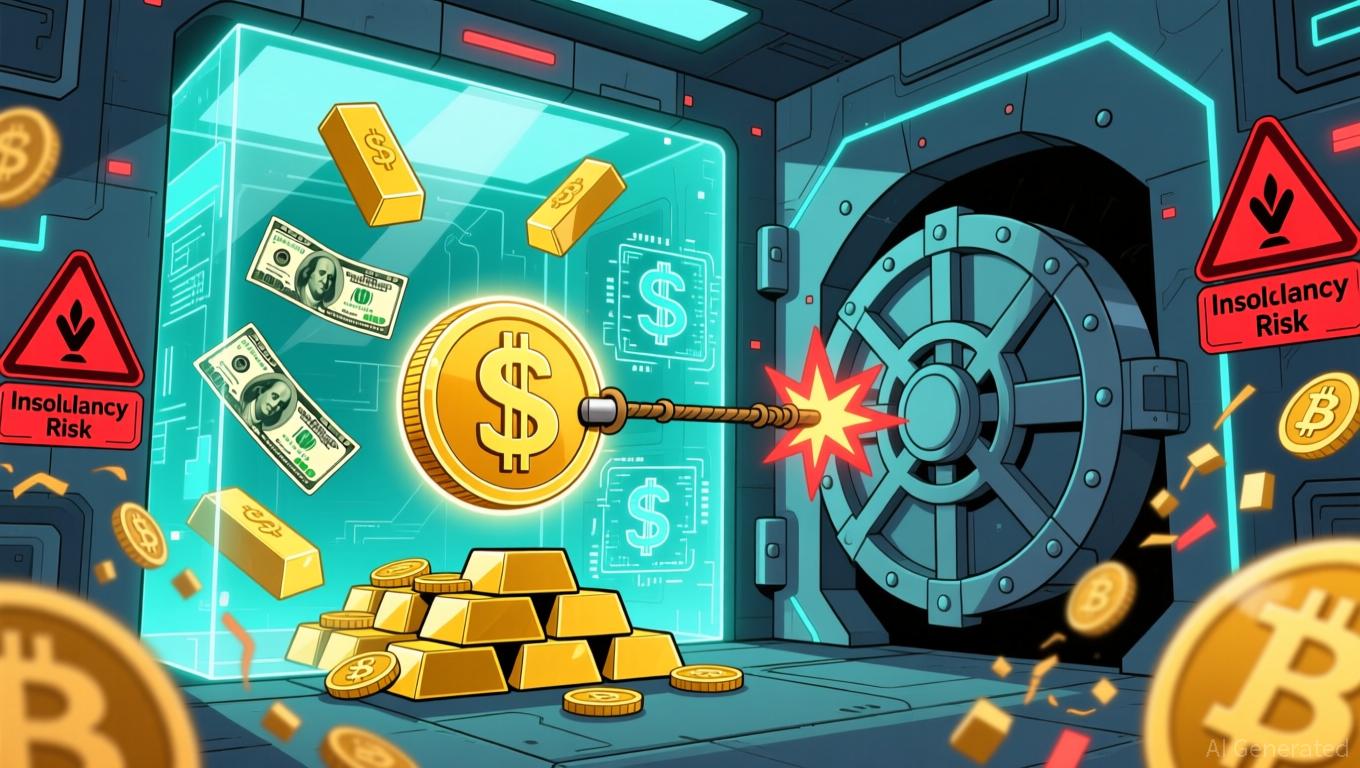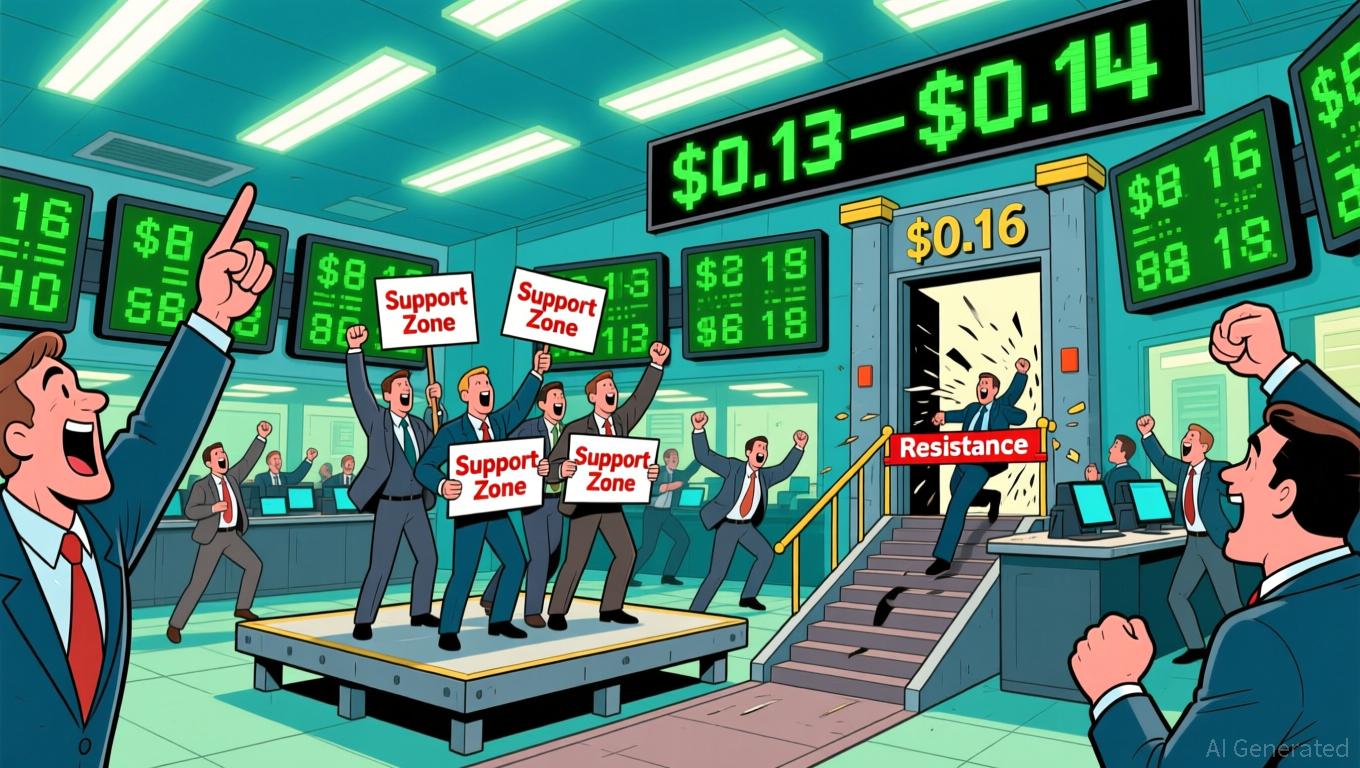The Federal Reserve's Change in Policy and Its Impact on Alternative Cryptocurrencies Such as Solana
- Fed's 2025 policy shifts, including rate cuts and stablecoin regulations, are reshaping altcoin markets by altering liquidity and risk appetite. - Solana's Alpenglow upgrade (150ms finality, 1M TPS) addresses scalability issues, aligning with Fed's AI-driven infrastructure focus despite network reliability concerns. - Institutional inflows into Solana ETFs ($100M AUM) contrast with retail caution (78% HODLers in red), highlighting divergent risk perceptions amid 30% price corrections. - Divergent ETF flo
The Federal Reserve’s 2025 Policy Shifts and Their Impact on Altcoins
Shifting monetary policy signals from the Federal Reserve in 2025 have triggered significant changes across the cryptocurrency landscape, especially for riskier altcoins such as Solana (SOL). As central banks adjust their approaches to stablecoins, interest rates, and technological advancements, the speculative nature of digital asset trading is being redefined by heightened macroeconomic uncertainty. This overview examines how the Fed’s evolving policies—from regulatory developments to potential rate reductions—are disproportionately influencing altcoins, with Solana’s recent technical progress and market activity serving as a prime example of both resilience and vulnerability.
Volatility in Monetary Policy and Its Effect on Altcoin Markets
In November 2025, the Federal Reserve introduced new policy measures, including the GENIUS Act, which established a regulatory framework for stablecoins, alongside hints at upcoming rate cuts. These moves have created a complex environment for cryptocurrencies. On one side, the end of quantitative tightening and renewed liquidity injections have encouraged risk-taking, favoring altcoins that perform well in low-rate conditions. Conversely, the Fed’s recognition of stablecoins as a significant factor in monetary policy has introduced fresh uncertainty, as these digital assets could disrupt traditional demand for U.S. Treasuries and influence the neutral interest rate.
This climate of uncertainty has intensified speculative trading in altcoins. Investors now weigh macroeconomic opportunities against the backdrop of regulatory and technical challenges. For example, Solana’s performance in the last quarter of 2025 illustrates this delicate balance: while institutional investments in the 21Shares Solana ETF (TSOL) reached $100 million in assets under management, the token also suffered a 14% decline within a week due to geopolitical instability and concerns over network reliability. These fluctuations highlight how Federal Reserve decisions, by shaping liquidity and risk appetite, have become crucial factors in altcoin trading strategies.

Solana’s Technological Advancements: Building a Stronger Foundation
Despite recent market turbulence, Solana’s technical enhancements in late 2025 have positioned it to potentially benefit from a more accommodative monetary environment. The Alpenglow upgrade introduced rapid 150ms block finality, while the Firedancer validator client now enables the network to process over a million transactions per second. These improvements have addressed persistent issues with scalability and reliability, making Solana more attractive for institutional use cases and aligning with the Fed’s broader interest in AI-powered financial infrastructure, where high-throughput blockchains are increasingly relevant.
Institutional investors have shown confidence in Solana’s underlying technology, accumulating 24 million SOL through 20 decentralized autonomous organization (DAO) offerings and ETFs, despite a 30% price drop. This trend suggests that long-term participants view recent declines as opportunities, especially as Solana’s ecosystem expands into decentralized finance, NFTs, and consumer applications. However, retail sentiment remains cautious: 78% of holders are currently at a loss, and over 80% of perpetual contracts on Binance are positioned long, indicating a fragile market structure.
Contrasting ETF Flows and Shifting Market Sentiment
The Federal Reserve’s policy direction has also revealed contrasting investor behavior among altcoins. While XRP ETFs have attracted inflows on the back of positive U.S. regulatory developments, Solana ETFs have experienced weekly outflows, reflecting a higher perceived risk. This disparity is partly due to Solana’s historical technical setbacks, such as network outages, compared to XRP’s improved legal standing after SEC litigation. Nevertheless, Solana’s price is currently recovering from the $138–$140 support range, with bullish investors eyeing a move toward $145–$150. A successful rally could reinforce the argument that Solana’s upgrades are restoring confidence in its capabilities as a high-performance blockchain.
Looking Ahead: Navigating Policy, Innovation, and Market Instability
The Federal Reserve’s evolving approach in 2025 highlights a growing connection between monetary policy volatility and cryptocurrency market dynamics. For altcoins like Solana, the intersection of regulatory clarity, technological progress, and broader economic conditions will shape their appeal to speculative capital. While anticipated rate cuts and new stablecoin regulations may create a more supportive environment for digital assets, they also raise the stakes for overleveraged positions and sudden liquidity shifts.
Solana’s recent technical milestones and increased institutional participation present a compelling case for a potential recovery. However, the asset’s future success will depend on its ability to maintain network stability and adapt to the Federal Reserve’s shifting regulatory landscape. As the prospect of a December 2025 rate cut approaches, investors must interpret the Fed’s actions not only as economic signals but also as catalysts for fundamental changes in the speculative dynamics of the crypto market.
Disclaimer: The content of this article solely reflects the author's opinion and does not represent the platform in any capacity. This article is not intended to serve as a reference for making investment decisions.
You may also like
Bitcoin News Update: S&P Rating Drop Highlights Tether’s Risky Asset Holdings and Lack of Transparency
- S&P downgrades Tether's USDT to "5 (weak)" due to high-risk reserves and transparency gaps. - Tether's 5.6% BTC exposure exceeds overcollateralization margins, risking undercollateralization if prices drop. - CEO dismisses critique as traditional finance bias, claiming no "toxic" assets in reserves. - Regulators intensify scrutiny as stablecoin centralization risks emerge amid $184B USDT circulation. - S&P urges Tether to reduce risky assets and enhance reserve disclosure to rebuild trust.

Dogecoin Latest Updates: Is a Repeat Performance on the Horizon? Holding $0.15 May Signal a 611% Rally for Dogecoin
- Dogecoin (DOGE) stabilized near $0.15 support, triggering historical 611% rally potential to $1 by 2026. - Grayscale's GDOG ETF and pending Bitwise BWOW ETF mark institutional adoption, though initial inflows remain muted. - Technical indicators show mixed momentum with RSI near oversold levels and key resistance at $0.16. - Market remains divided as ETF-driven liquidity and on-chain infrastructure contrast with macroeconomic and regulatory risks.

Turkmenistan’s Approach to Cryptocurrency: Centralized Oversight Amidst a Decentralized Age
- Turkmenistan legalizes crypto trading under strict 2026 regulations, granting state control over exchanges, mining , and custodial services. - Law mandates KYC/AML compliance, bans traditional banks from crypto services, and classifies digital assets into "backed" and "unbacked" categories. - Central bank gains authority to operate state-monitored distributed ledgers, contrasting with decentralized approaches in South Korea and Bhutan. - Framework aims to balance innovation with oversight, testing Turkme
Bitcoin News Update: Has $162 Billion Left Crypto Due to Institutional Buying or a Broader Market Pullback?
- BlackRock deposited 4,198 BTC and 43,237 ETH into Coinbase amid crypto sell-offs, despite $355.5M Bitcoin ETF outflows. - A 1.8M BTC ($162B) overnight exchange withdrawal sparks speculation about institutional accumulation or portfolio rebalancing. - $40B in BTC/ETH exchange inflows and record $51.1B Binance stablecoin reserves highlight institutional demand for regulated crypto products. - On-chain data shows 45% of large deposits (≥100 BTC) and 1.8M BTC withdrawals, indicating mixed market sentiment ah
